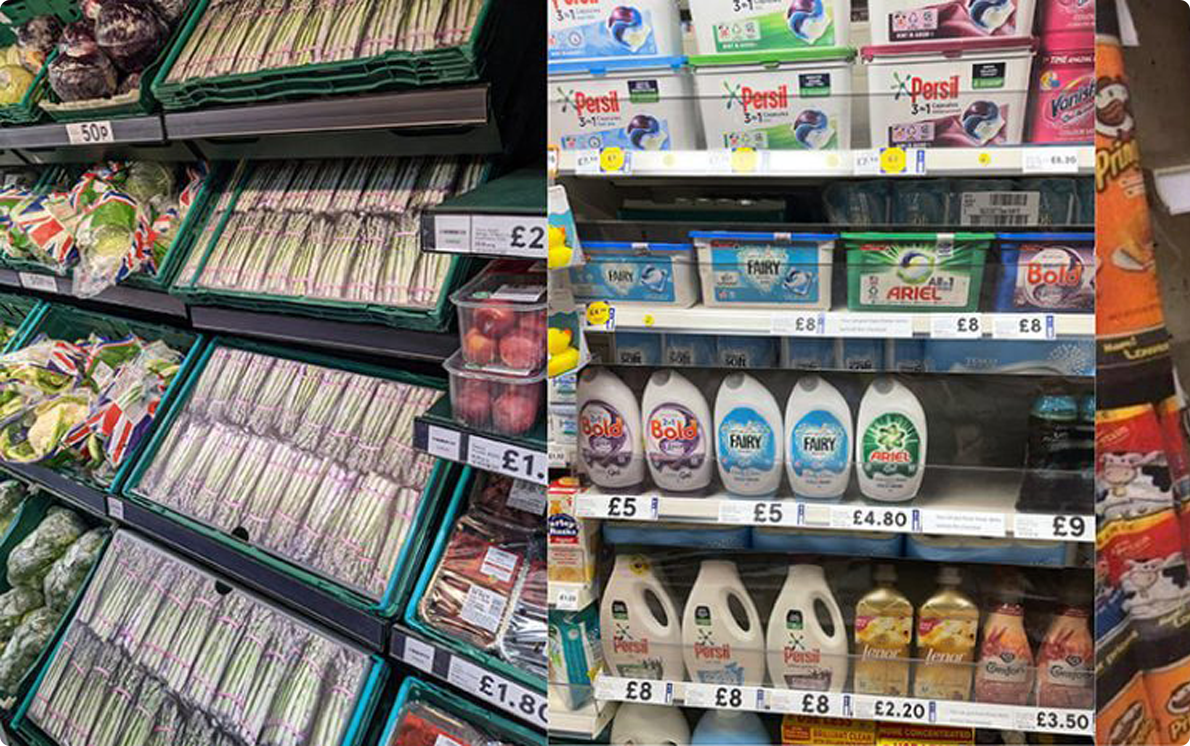
Images of shelf inserts (2021).
The resurgent impact of the Covid-19 delta variant in Fall 2021 has amplified the pandemic’s supply chain disruptions. Stock has run out. Shipments have slowed. Prices have risen. Consumer demand is at levels that – in some areas – exceed all prior demand, with temporary price fluctuations giving way to rampant inflation. In this context, an absence of clear explanations for uneven distribution has provided a formative canvas for false, misleading and sometimes dangerous claims about the state of global supply. Refracting an array of imaginaries built around the obtuse operations of global logistics, narratives surrounding the supply chain have become a site for contested claims about the interconnected nature of contemporary life. Dislocated images of empty shelves circulate, their ubiquitous use in polarized political debates such that they have been flagged as misinformation. Photographs of vinyl sheets and cardboard inserts in awkward approximation of absent goods are mocked by some, but suggest to others signs of deliberate subterfuge. Even mundane maritime maps are assembled as evidence of – commenters claim – countries “under attack.”
Hockenberry, Matthew. 2022. “None Dare Call It a Supply Chain: Logistics as Conspiracy.” Roadsides 7: 8-14. https://doi.org/10.26034/roadsides-202200702


